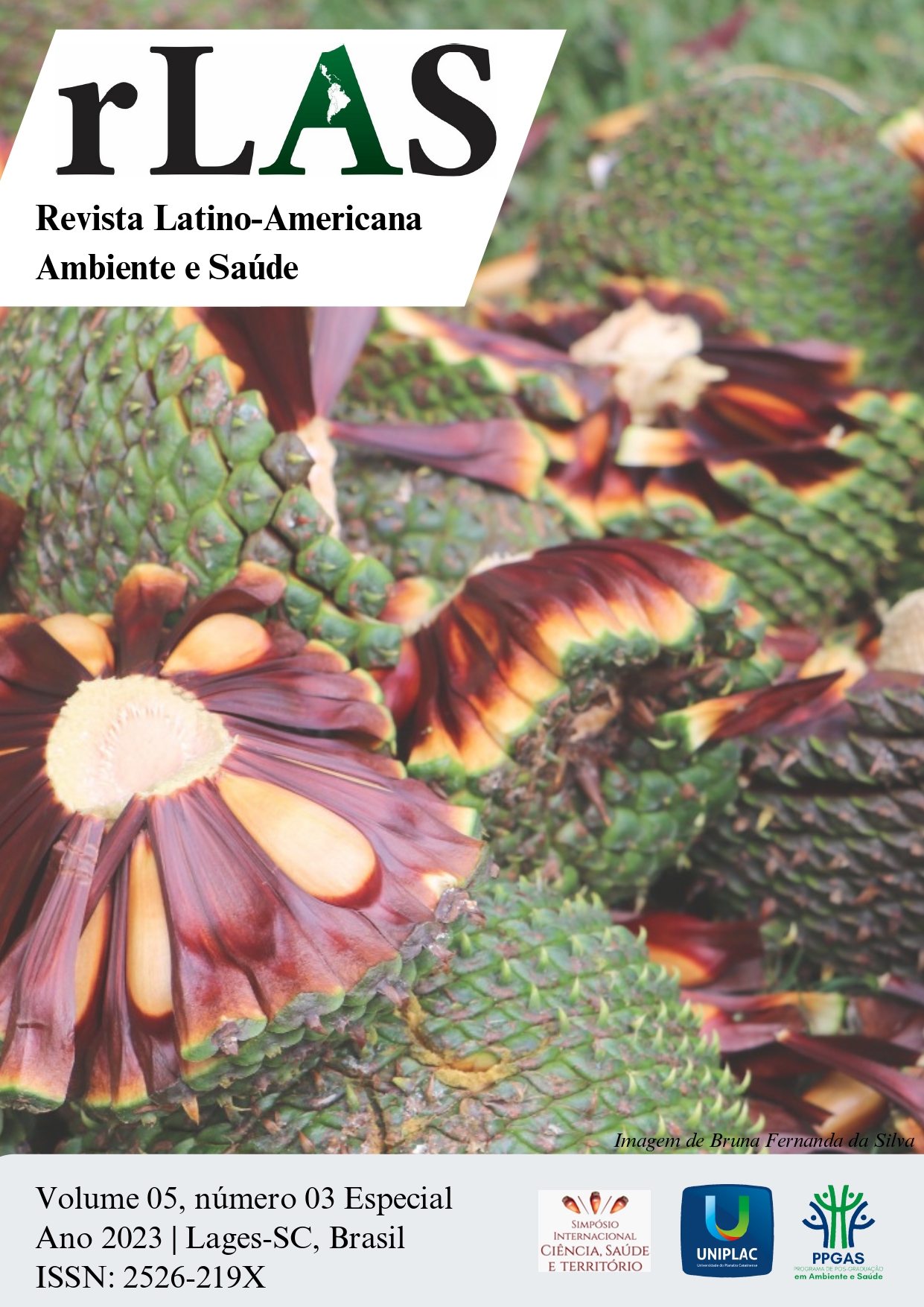Extraction of cadmium in soil using Mehlich-1 and Barium Chloride methods
Keywords:
Mehlich -1. Barium Chloride. Argisol. Heavy metals.Abstract
The objective of this study was to compare the Mehlich-1 and barium chloride methods as extractants of cadmium from an Argisol soil. The experiment was conducted in a greenhouse at the State University of Santa Catarina. The experimental design was completely randomized in a 2x4 factorial arrangement, with two plant species and four cadmium doses (0; 1.5; 3.0; 6.0 mg kg-1) studied, each with three replications. The experimental units consisted of plastic trays containing 1.8 kg of soil. Cadmium doses were applied to the plots in the form of a solution prepared with Cd(NO3)2 at the adopted concentrations, and the soil was then incubated for 15 days. After this period, soil fertilization was carried out according to the recommendations of the Soil Chemistry and Fertility Commission – RS/SC. To quantify Cd, extraction was performed using the Mehlich-1 and Barium Chloride methods. The Mehlich-1 method was found to be more efficient than the Barium Chloride method for extracting cadmium from Red-Yellow Argisol soil.
References
GEE, G. W.; BAUDER, J. W.; KLUTE, A. Methods of soil analysis, part 1, physical and mineralogical methods. Soil Science Society of America, American Society of Agronomy, 1986.
HELIOS-RYBICKA, E.; WÓJCIK, R. Competitive sorption/desorption of Zn, Cd, Pb, Ni, Cu, and Cr by clay-bearing mining wastes. Applied Clay Science, v. 65, p. 6-13, 2012.
JENG, A. S. Weathering of some Norwegian alum shales, II. Laboratory simulations to study the influence of aging, acidification and liming on heavy metal release. Acta Agriculturae Scandinavica B-Plant Soil Sciences, v. 42, n. 2, p. 76-87, 1992.
LOPES, C. Acúmulo de cádmio e crescimento de plantas de agrião, chicória e rúcula cultivadas em argissolo vermelho-amarelo. 2015. Tese (Doutorado Manejo do Solo). Universidade do Estado de Santa Catarina, Lages, 2015.
MENG, D. et al. Effects of redox potential on soil cadmium solubility: insight into microbial community. Journal of Environmental Sciences, v. 75, p. 224-232, 2019.
SHAARI, N. E. M. et al. Cadmium toxicity symptoms and uptake mechanism in plants: a review. Brazilian Journal of Biology, v. 84, 2022.
SILBER, A. et al. Zinc adsorption by perlite: Effects of pH, ionic strength, temperature, and pre-use as growth substrate. Geoderma, v. 170, p. 159-167, 2012.
TAVARES, SR de L.; DE OLIVEIRA, S. A. Avaliação de diferentes métodos de extração de metais pesados em solos contaminados provenientes de atividades de galvanoplastia. 2017. Disponível em: https://www.embrapa.br/busca-de-publicacoes/-/publicacao/950815/avaliacao-de-diferentes-metodos-de-extracao-de-metais-pesados-em-solos-contaminados-provenientes-de-atividades-de-galvanoplastia
TEDESCO, M. J. et al. Análise de solo, plantas e outros materiais. 2.ed. Porto Alegre: Departamento de Solos, UFRGS. 174p, 1995.
YANG, Yang et al. Regional accumulation characteristics of cadmium in vegetables: influencing factors, transfer model and indication of soil threshold content. Environmental Pollution, v. 219, p. 1036-1043, 2016.


